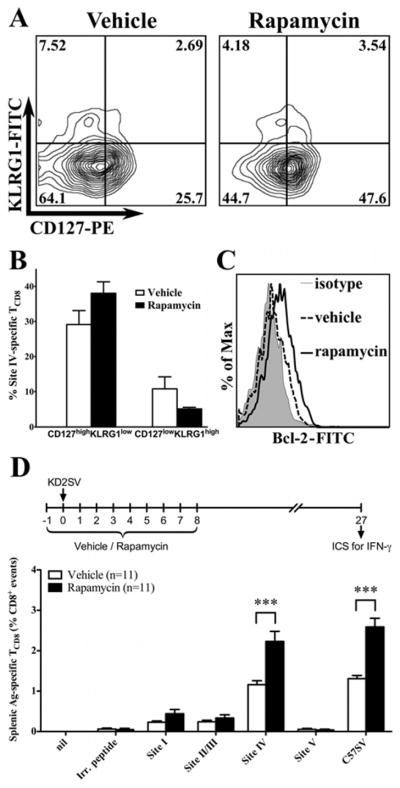Figure 3.
Rapamycin treatment improves the quality of primary T Ag-specific TCD8 and promotes their progression to memory cells. Site IV-specific TCD8 identified by ICS for IFN-γ were gated upon and assessed for their expression of CD127 and KLRG1 (A,B) as well as intracellular Bcl-2 (C). Representative FACS plots for these markers are shown. In addition, the frequencies of CD127highKLRG1low (memory TCD8 precursors) and CD127lowKLRG1high (short-lived effectors) are shown for 6 mice/group (B). Statistical comparisons revealed that rapamycin-treated mice had a higher proportion of CD127highKLRG1low cells compared with vehicle-treated animals (38 ± 3.3 vs. 29.1 ± 4, p=0.11) and a lower proportion of CD127lowKLRG1high cells (5.1 ± 0.4 vs. 10.8 ± 3.4, p=0.15). In separate experiments, B6 mice were immunized with KD2SV cells and treated with rapamycin or vehicle during the initial priming phase as illustrated (D). Mice were left untreated until day 27, at which point the frequency of T Ag-specific TCD8 was determined by ICS for IFN-γ. Data are shown as mean ± SEM obtained from 11 mice/group pooled from 3 independent experiments.

